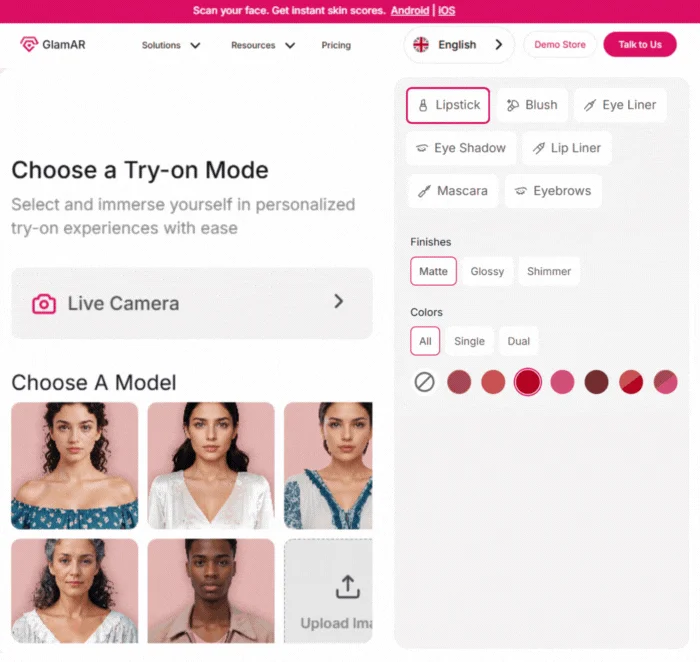AR mirror


Realistic experience and digital overlay

.gif)
Artificial intelligence and facial recognition
Multi-purpose use cases and applications

Häufig gestellte Fragen
An AR mirror is an augmented reality-based technology that helps brands display their products virtually by overlaying digital visuals to provide their customers with a real-time reflection during online shopping. It combines users’ live camera feed with the virtual display content, enabling them to virtually try on different products, including fashion, accessories, and cosmetics, which will help online businesses to bridge the gap between online and offline experience.
A smart mirror helps businesses to display information, including the time, weather, news, or calendar events, on a reflective surface to provide users with factual information. On the other hand, an AR mirror helps online sellers to use AR technology to overlay virtual items such as clothing, makeup, or jewelry onto the user's reflection to provide them with a deeply interactive and visual experience.
Various hardware and software technologies are used by an AR mirror, including a two-way mirror with a semi-reflective surface, a camera and sensors to capture the user's real-time image and body movements, an LCD, OLED, or projector screen to project the digital content, and advanced algorithms and artificial intelligence technology to recognize the user's body and facial features to overlay 3D digital models of products accurately.
By using an AR mirror, both businesses and customers will get multiple advantages, such as increased customer engagement, higher conversion rates, reduced product returns, improved hygiene, enhanced operational efficiency, and a personalized user experience.
An AR mirror can be used in multiple applications, including retail, beauty and cosmetics, eyewear, advertising and events, and fitness, providing users with an engaging and immersive online shopping experience with the help of advanced algorithms and technologies.
Yes, using an AR mirror will help businesses and sellers integrate e-commerce platforms, mobile apps, or QR systems, enabling them to add products directly to their online carts or wishlists after trying them virtually and providing them with an immersive experience during online shopping.
















